Salt Water Reef Aquarium: A Special Kind of Real Estate!
Standard homes in the Spruce Grove, Stony Plain, Parkland County and Edmonton region are not the only real estate I deal with! Here are a few of the inhabitants of my salt water reef aquarium.
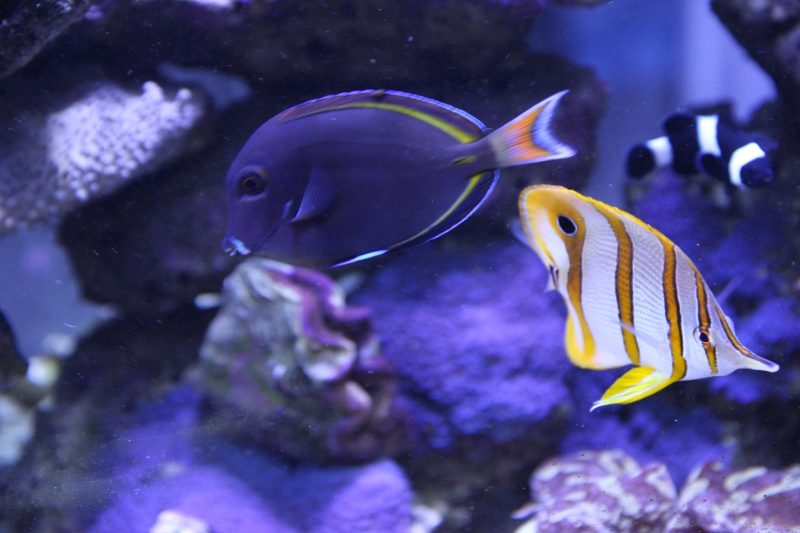
The deep blue fish on the left is known as the Achilles Tang Hybrid, a rare and special fish. “It is a quark [sic] of nature where an Achilles Tang and a Goldrim Tang have merged together during conception. It is one of the few reef fishes in Hawaiian waters known to hybridize.” (from the website SaltAquarium.about.com). The long nosed fish on the right is a Copperband Butterfly fish. I bought this fish because it has a highly specialized diet; it loves eating an aquarium pest known as Aiptaisa Anemones. These pesky sea anemones are known to take over a saltwater aquarium. The problem with Copperbands is that once they have eaten all the Aiptaisa, they will sometimes starve to death because they are such finicky eaters. I have managed to get my Copperband to eat frozen brine shrimp (which I feed to all my fish). Occasionally I find a rock with Aiptaisa growing on it in my quarantine tank. Once I move the rock to my main tank, my Copperband will hunt down all the Aiptaisa and make a meal of it in very short order.
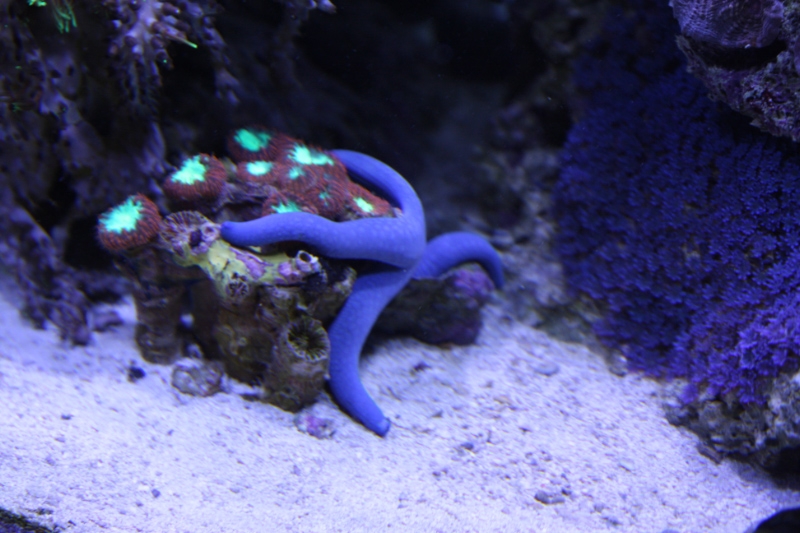
This is a photo of my starfish. It is currently wrapped around my blasto coral from Australia. It always amazes me how gentle this creature is. It never damages or knocks over any of the corals. My wife Paulette calls him Gumby.
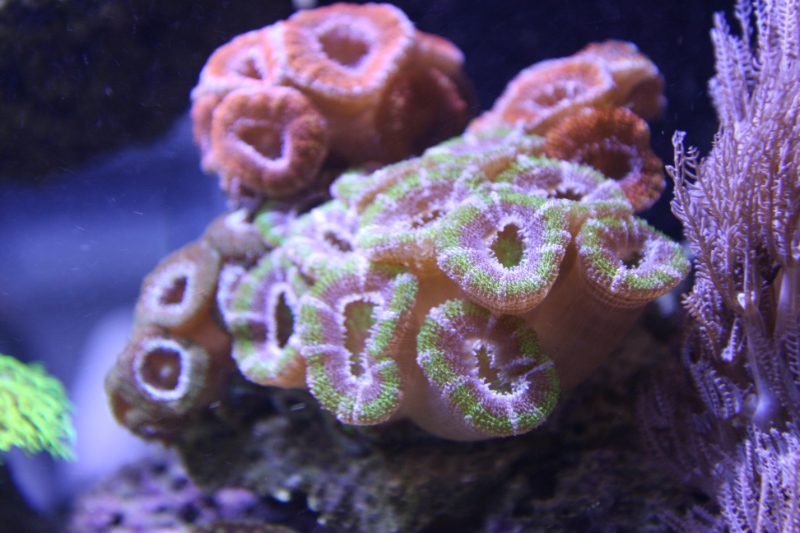
These are some of my favorite corals, the Australian Acans. These corals are fully extended out with their feeder tentacles exposed. This is the sign of a happy and healthy Acan.
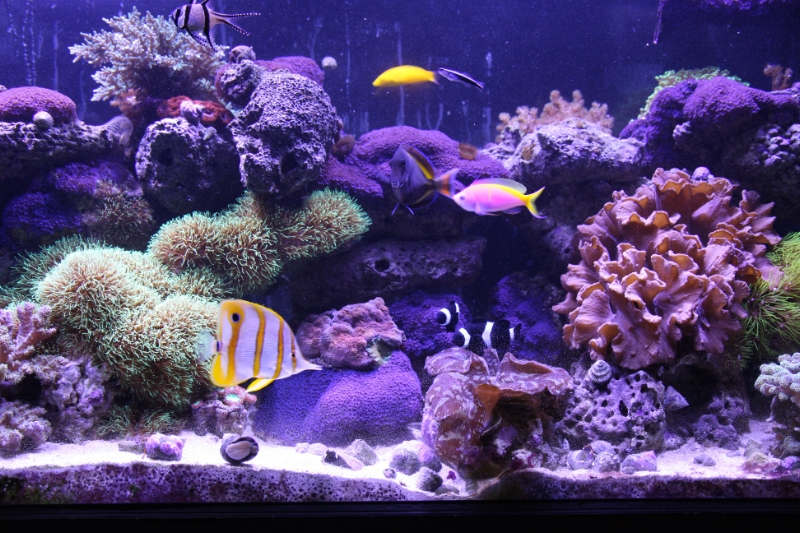
This is a photo of my main tank which I started in the fall of 2008. It is now fully matured (this can take 6 plus months). The photo shows most of the fish in my tank, along with my black and white clown fish. Just below them is a living giant clam, which my clown fish have decided to “host”. Clown fish, also known as anemonefish, usually host an anemone in the wild. I can only describe this as a love affair between these two creatures. Because having a poisonous anemone can be extremely detrimental to a reef tank, I choose not to have one. So my clown fish have taken to hosting my giant clam, claiming it and defending it as their territory. They are never very far away from this clam. They nudge it in the morning to wake it up, sleep on it at night and do not like anything coming close to their clam, including my hand when I try to clean the inside glass.
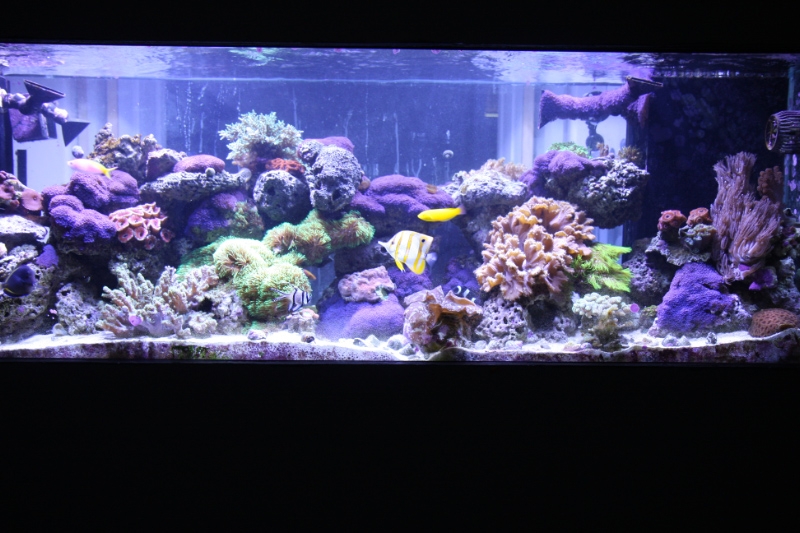
Another picture from my main tank. Pretty much everything you can see in this aquarium is alive: the corals and fish, of course, but there is even life in the sand and rocks. The rock, referred to as “live rock”, serves many purposes, and is probably the most popular material used for natural biological filtration in saltwater aquariums. What surprises most people is how alive the corals are. They expand and contract, react to touch, light and food. What people may not know is that many corals are carnivorous, and many have long stinging tentacles used to protect their territory. The winner of any coral conflict is usually determined by which coral produces the strongest poison. Fortunately for us, human skin is too thick for most corals to penetrate. Although there is a lot going on in a reef aquarium during the day, plenty of interesting things happen after the lights are turned out at night. A flashlight will expose the many night creatures and add a whole new dimension to a reef system.
Are you looking for a special kind of real estate? I’d love to help you find your dream home. Phone me at 780-910-9669, email me at barry@barryt.ca, or contact me here.
Tags: hobbies, Salt Water Aquarium, spruce grove homes, spruce grove real estate


